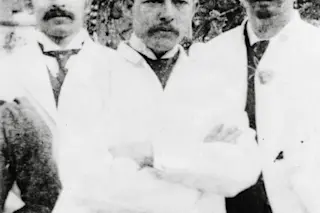In 1891, a man could plunge a syringe loaded with toxic bacteria into the neck of another man — simply on a hunch.
In May of that year, William B. Coley was the man holding that dubious syringe in the apartment of a 35-year-old Italian immigrant and drug addict named Zola. Poor Zola was told he might have only weeks to live due to an egg-size, inoperable tumor obstructing his pharynx, making it impossible for him to swallow food. Zola’s last shot at survival was in the hands of Coley, a 29-year-old bone surgeon who had just completed his training at New York Memorial Hospital. The young surgeon believed he was holding a cure for cancer in that syringe.
Coley was fascinated by a smattering of curious cancer stories referenced in the medical literature of the era: Patients riddled with inoperable tumors suddenly found themselves cancer-free after contracting erysipelas, another ...














